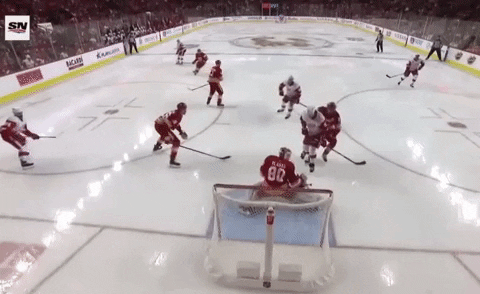Last week we covered the concept of middle ice and the dot lanes. Today, we’re going to illustrate examples of how players are using the dots themselves to their advantage.
Zone entry
High-level hockey does not insist on “F2 hard drive to the net” during a zone entry. Instead, many players aim for the offensive zone dot. These routes allow for area passes, requires the weakside defensemen to make a decision, and opens the ice spacing for the offense.
In the example below, Patrick Kane heads to the dot instead of the net. This allows Dylan Strome to make a high-danger pass.
Jack Hughes takes a similar route to the dot during New Jersey’s zone entry.
In-Zone Offense
This is a personal favorite of mine. The faceoff dot can be used as a guide to support positioning and spacing. A support player can yell “Dot!” and the player makes an area pass to the dot, almost blindly.
The Flyers forecheck hard and create a battle. The third offensive player surfs over and supports the battle on the faceoff dot.
Dot positioning has great spacing and allows the support player to react well on a lost or won battle. This play ends up loose and the support player on the dot is in great spot to make a play. But even if Montreal would have won the puck, the dot player is in a good defensive posture.
Here, John Tavares presents himself as a support option to the puck retriever and then ends up being in a great position to take the backhand pass from behind the net. Great positioning habit leads to a quality goal.
Another example on a puck recovery during a power play. Both strong-side and weak-side flanks are using the dots to perfection.
This is something to notice when you’re watching a game or something to try out when playing your next game. Remember, great routes and spacings revolve around the dots.
Further Reading







